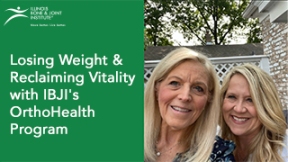Osteoporosis causes bodily changes like the loss of bone mass and structural deterioration of bone tissue. This leads to bone fragility and increased susceptibility to fractures of the spine, hip, and wrist. Osteoporosis affects more than 25 million Americans each year and contributes to more than 1.5 million fractures. The National Osteoporosis Foundation has estimated that roughly 10 million Americans over the age of 50 already have the disease.
Women are most prone to feel some effects of osteoporosis in their lifetime, but the good news is that much can be done to reduce and even prevent loss of bone mass and fractures. You can decrease your chances of suffering the effects of osteoporosis through prevention and intervention.
The exact cause of osteoporosis is unknown, but doctors have identified many of the major factors that can lead to the disease. There are risk factors that may predict your chances of developing it. Some risk factors are inherited and genetic, while others are due to medical conditions, that you may not be able to avoid. Lifestyle related risk factors are the ones that you have most control over.
Low Calcium Intake
Poor nutrition, including a low calcium diet can lead to osteoporosis. Consumption below 300 mg per day (which is equal to one glass of milk) is considered low.
Low (or no) Vitamin D
Vitamin D comes from sunlight and foods such as egg yolks, fortified milk and cereals, and some types of fish.
High Caffeine Intake
More than two to three cups of caffeinated coffee each day is considered high if you have a low calcium intake.
Smoking
This includes current use as well as past use of tobacco.
Alcohol Use
More than 7 oz. of alcohol per week can slightly increase risk.
Low Activity
Your activity rate is considered low if you do not walk or exercise regularly.
Preventive Treatment Options
Calcium
The most fundamental suggestion is to increase your calcium intake, either through dietary changes or supplemental pills. After age 30, calcium helps decrease bone loss, strengthen bones, and decrease the risk of fractures. Whatever your age or health status, you need calcium to keep your bones healthy and strong. Calcium continues to be an essential nutrient after growth because the body loses calcium daily.
Vitamin D
A vitamin D deficiency may contribute to bone loss and fracture. At least 800 mg per day is recommended for adults.
Exercise
Exercising five days a week for at least 30 minutes helps reduce bone loss. Like muscles, bones need exercise to stay strong. No matter what your age, exercise can help minimize bone loss while providing many additional health benefits. Doctors believe that a program of moderate exercise helps prevent osteoporosis.
Medications
Currently, four medications have approval from the Food and Drug Administration (FDA).
- Hormone Replacement Therapy
- Bisphosphonates
- Calcitonin
- Selective Estrogen Receptor Modulators
Successful bone health management requires a comprehensive treatment approach for each patient based on risk factors, lifestyle and bone density results. Check out the any of the IBJI Osteoporosis Centers in Bannockburn, Morton Grove, Lincolnwood and Des Plaines for expert osteoporosis care.
*This content is for information only and is not intended to replace the diagnosis, treatment, or medical advice from your treating healthcare professionals. The content does not provide medical advice, does not constitute the practice of medicine or other healthcare professional services, and does not create a doctor-patient relationship. You should not rely on this information as a substitute, nor does it replace professional medical advice, diagnosis, or treatment. If you have concerns or questions, seek the advice of your healthcare professionals. If you think you may have a medical emergency, call your doctor or 911 immediately. Do not rely on electronic communications or communicate through this website for immediate, urgent medical needs. This website is not designed to facilitate medical emergencies. The use of the information is at the reader’s own risk. The links are provided for information and convenience only. We cannot accept responsibility for the sites linked or the information found here. A link does not imply an endorsement of a site.





